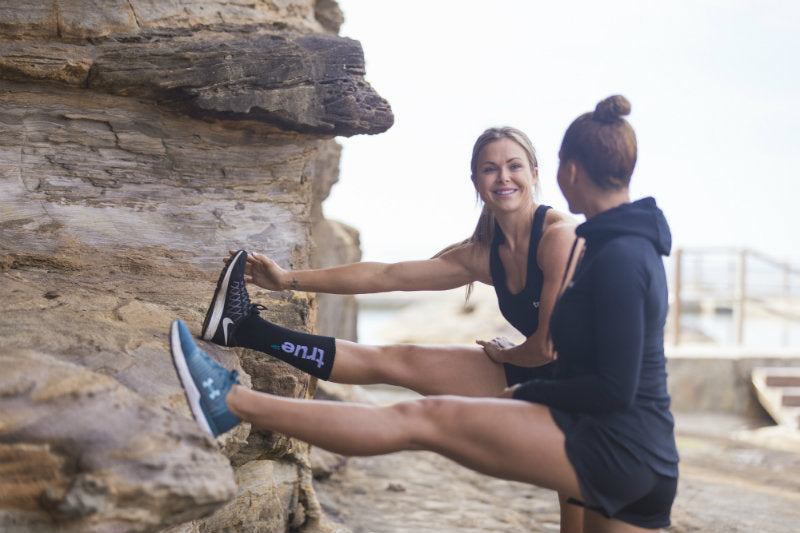No gym, no worries!
This blog will provide you with some options to develop movement skills and keep up with your regular exercise routine to improve your physical and mental health. It’ll also give you some strategies to get in the “zone” and on how to build the habit of training from home even when motivation may be fading.
Pre Traning
Getting into the mood to train can be tricky from home. Try to develop a pre-training ritual and routine to get the body and brain ready to train. Eat a regular pre-exercise meal 1-2 hours beforehand, have a coffee 30-60 minutes beforehand (skip this step at night), put your socks and shoes on, set up your equipment, put on your favourite pump-up music on.
How to program your session.
Skill Development
Use this time as a chance to build some skills.
Step 1 - Select a skill
for example, Pistol, Sit Up, Push Up
Step 2 - Select Scaling Option
Pistol: squat, close footed squat, single-leg box squat, ballerina squat and elevated single-leg squat.
Sit Up: crunch, roll up, top-down and fixed foot.
Push Up: wall, incline, knee, elevated floor push-up and wide feet.
Step 3 - Practice 2-3 times per week
DAY 1 - 5 x 5 progressions
DAY 2 - 6 x 4 progressions with a pause at the top and bottom of each repetition.
DAY 3 - every 30 seconds for 5 minutes 2/3 progressions.
Using these progressions to help you work towards or work on a skill that interests you is a great way to build your skill repertoire, and the ability to incorporate a small portion of exercise a few times a week.

Bodyweight exercises
Here are some ideas of exercises you can incorporate into your routine. They don’t require any equipment and can be done anywhere.
Lower Body
-
Air squat (change stance - wide, narrow, staggered stance)
-
Lunge
-
Split Squat
-
Pistol/One Legged Squat
-
Kanga Squat
-
Good Morning
-
King Squat
-
Shrimp Squat
-
Cossack Squat
-
Single Leg RDL
-
Jump Squat
-
Jumping Lunge
-
Hip Thrusts
Upper Body
-
Push Up (change hand position - wide, narrow, diamond, staggered)
-
Chair/Bench Dips
-
Table Horizontal Row
-
Hand Release Push Up
-
Handstand Push Up
-
Feet Elevated Push Up
-
Push Up On Table
-
Supermans
-
Back Extension
Core
-
Bird Dog
-
Bicycle Crunches
-
Leg Raises
-
Toe Touches
-
V Sit Up
-
Reverse Crunches
-
Plank
-
Plank March
-
Side Plank
-
Side Plank Pulse
-
Leg Raise w/ Pulse
Equipment Exercises
Lower Body
-
Goblet for Squat Variations
-
Single-Leg Deadlifts
-
Single Arm Overhead Lunges
-
Weighted Hip Thrusts/Glute Bridge
Upper body
-
Curls
-
Tricep extensions
-
Skull Crushers
-
Bent-Over Row
-
Lateral/Front Raises
-
Reverse Fly
-
Overhead Press
Daily Programming
-
Start your session off with Skill Development
-
Select 3-4 exercises from each group of Upper, Lower and Core
-
Aim for a rep range that will get you close to muscular failure for each movement (15-30 reps).
-
Try supersets or tri-sets to overload the muscle for greater adaptations
-
Aim for 2-4 sets
Addition Programming Options
AMRAP: Select 3 movements and set a timer for 10 minutes. Set a rep scheme of 10-20 per movement and cycle through movements for the time domain.
EMOM: Complete your program in an Alternating EMOM style. Changing up each movement every minute. Examples 8 exercises, 4 sets each would be a 32-minute EMOM.
Final Thoughts
Keep a training journal and try to increase your reps or weights each week to aim for “progressive overload”.
One final recommendation is to try and keep a consistent training time/schedule. Get the body and brain into a familiar routine so your day runs like clockwork whether it be first thing in the morning or in the afternoons.
Getting started is usually the hardest part of exercising. If you’re feeling a little bit demotivated try the 2-minute rule. Set a timer for 2 minutes and get started. More often than not you’ll keep going. Objects in motion stay in motion, objects at rest stay at rest. Get started, get moving, keep moving!



